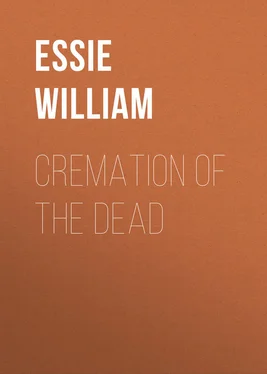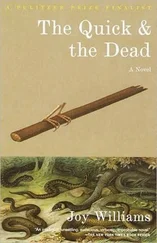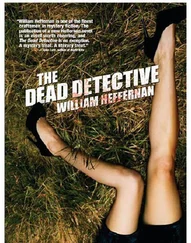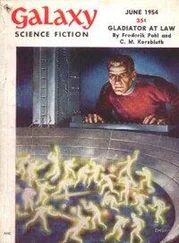William Essie - Cremation of the Dead
Здесь есть возможность читать онлайн «William Essie - Cremation of the Dead» — ознакомительный отрывок электронной книги совершенно бесплатно, а после прочтения отрывка купить полную версию. В некоторых случаях можно слушать аудио, скачать через торрент в формате fb2 и присутствует краткое содержание. Жанр: foreign_antique, foreign_prose, на английском языке. Описание произведения, (предисловие) а так же отзывы посетителей доступны на портале библиотеки ЛибКат.
- Название:Cremation of the Dead
- Автор:
- Жанр:
- Год:неизвестен
- ISBN:нет данных
- Рейтинг книги:4 / 5. Голосов: 1
-
Избранное:Добавить в избранное
- Отзывы:
-
Ваша оценка:
- 80
- 1
- 2
- 3
- 4
- 5
Cremation of the Dead: краткое содержание, описание и аннотация
Предлагаем к чтению аннотацию, описание, краткое содержание или предисловие (зависит от того, что написал сам автор книги «Cremation of the Dead»). Если вы не нашли необходимую информацию о книге — напишите в комментариях, мы постараемся отыскать её.
Cremation of the Dead — читать онлайн ознакомительный отрывок
Ниже представлен текст книги, разбитый по страницам. Система сохранения места последней прочитанной страницы, позволяет с удобством читать онлайн бесплатно книгу «Cremation of the Dead», без необходимости каждый раз заново искать на чём Вы остановились. Поставьте закладку, и сможете в любой момент перейти на страницу, на которой закончили чтение.
Интервал:
Закладка:
There is a system of burial somewhat analogous to embalming, which consists of drying up the body, and then interring it. The ancient Peruvians used to dry their dead in the sun, and inter them in a sitting posture, bound in cotton cloth, the quantity of saltpetre in the ground completing the desiccation. 67 67 Hutchinson.
The Huacas or huge pyramidal burial mounds of these people, which were so constructed that each added body, with its funeral accessories, had its own clay-mortar enclosure, prove also that some rude attempt at embalmment was practised. 68 68 Bradley.
To the present day races are discovered which possess some knowledge of the art. A tribe in South Australia practise the following system. They place the deceased in a sitting posture near the top of the hut, and keep up fires until the body is dry, when they proceed to bandage it. Eventually they hide it away amongst the branches of trees. 69 69 Hutchinson.
In another remote part of the world, Japan, the Aino aboriginals, when a chief dies, lay the body out at the door of the hut, remove the viscera, and wash it daily in the sun for a whole year. When completely dried, the remains are put in a coffin and buried. 70 70 St. John.
In India beyond the Ganges, the Looshais also practise a desiccation of the dead. 71 71 Dr. A. Campbell.
And the manner in which the body of our noble traveller Dr. Livingstone was prepared previous to bringing him home, would seem to point to the prevalence of such a custom, or to the tradition of one, amongst the African races.
There remains now only cremation to notice, the origin of which practice is lost in obscurity. It would serve little purpose to compile a mere list of the countries in which it was practised. Sufficient now to say that nearly all the ancient peoples observed it, the Chinese and the Jews being notable exceptions to this rule. The ancient Germans burnt their dead; 72 72 Tacitus.
so did the ancient Lithuanians – placing the ashes in urns of unburnt clay, and burying them in mounds, as is proved by an exploration of the great barrows near Sapolia in Russia. 73 73 Bogouschefsky.
Over our own islands also, cremation seems to have been common. Urns are still unearthed from time to time in England, and in parts of Ireland – one part of Antrim especially – the ground is almost studded with burial sites of this character. In Scotland, too, many similar remains have been discovered. In Hindoostan the system is all but universal, and in Siam, where the ashes are frequently placed in urns of great value, 74 74 Crawfurd, &c.
it doubtless existed from the first peopling of the country. The people of Pegu and Laos also burn their dead; 75 75 Feudge.
and in Burmah, when a Buddhist priest of rank dies, the body is embalmed in honey, laid in state for a time, and then sometimes blown up with gunpowder together with its hearse.
Scarcely a year passes over our heads without adding to our list of cremation-practising peoples. Thus we have lately learnt that amongst the Gāro Hill tribes of Bengal, the dead are kept for four days and burnt at midnight within a few yards of their residences, the ashes being put into a hole in the ground dug upon the exact spot where the burning took place, and a small thatched building erected over the grave, which is afterwards allowed to fall to pieces. 76 76 Elliot.
The Khāsi Hill tribes also practise cremation of the dead, and the ashes are collected in an urn, and temporarily buried close by, until it is deemed proper to remove them to the family depository of the tribe. 77 77 Major Godwin-Austen.
Some of the Aracan tribes of Further India also burn their dead, leaving at the place of cremation some packets of rice, a neglect of which custom is a bar to inheritance. 78 78 St. A. St. John.
And not only from remote Asia do instances of cremation come before us, but from America, where the practice was little suspected. Thus the Cocopa Indians there practise it to the present day, laying the body upon logs of mezquite wood, burning it, with the effects of the deceased, and placing the ashes in urns with peculiar ceremonies. 79 79 Professor Le Conte.
The Digger Indians also burn their dead, the nearest relative collecting the ashes and mixing with them the gum of a tree. This they smear on their heads in evident imitation, one would suppose, of the Israelites when in mourning. 80 80 Chapman.
Конец ознакомительного фрагмента.
Текст предоставлен ООО «ЛитРес».
Прочитайте эту книгу целиком, купив полную легальную версию на ЛитРес.
Безопасно оплатить книгу можно банковской картой Visa, MasterCard, Maestro, со счета мобильного телефона, с платежного терминала, в салоне МТС или Связной, через PayPal, WebMoney, Яндекс.Деньги, QIWI Кошелек, бонусными картами или другим удобным Вам способом.
1
The original proposer of this scheme was M. Rudler, who proposed it to Dr. Caffe, of Paris, in 1857.
2
Jamieson.
3
Ibid.
4
Herodotus.
5
Cicero.
6
Pliny.
7
Canon Greenwell.
8
Jamieson.
9
Cremation is not opposed to Jewish doctrines. – 'Jewish Chronicle,' April 10, 1874.
10
Frazer.
11
'Iliad.'
12
'On the Causes of some Epidemics.' Glasgow, 1874.
13
'The plague-pit,' says the 'Lancet' of September 16, 1854, 'is situated within the area bounded by Argyll Place, King Street, Tyler Street, Little Marlborough Street being directly over the pit.'
14
H. W. Hemsworth.
15
Rolleston.
16
Tertullian.
17
Jamieson.
18
'Lancet.'
19
St. A. St. John.
20
Rev. J. Edkins.
21
The Earl of Shaftesbury once remarked to an eminent promoter of the present cremation movement, with regard to this very prevalent and erroneous notion, that it was altogether unreasonable. 'What,' said he, 'would in such a case become of the blessed martyrs?'
22
'I presume that it has been shown beyond doubt that the material particles which make up our bodies are in a constant state of flux, the entire physical nature being changed every seven years; so that if all the particles which once entered into the structure of a man of fourscore were reassembled, they would suffice to make seven or eight bodies.' – Rev. A. K. H. B.
23
Dean Stanley.
24
Ibid.
25
I. O. in 'Church Review.'
26
Cremation has already been made the subject of verse upon the Continent. Dr. Moretti, of Cannero, in the 'Annali di Chimica,' 1872, has given to the world some excellent verses; and Professor Polizzi, in a poem published at Girgenti, 1873, and dedicated to the memory of Dr. Salsi, has also eloquently apostrophised the subject. Some two-and-twenty stanzas in the Milanese dialect were published in 1874, by Civelli of Milan. I have also seen some German verses, signed 'Dranmor,' and a short but charming poem in the same language by Justinius Kerner. It is a matter of regret that those of our own poets who have been in favour of burning the dead did not enshrine their proclivities in verse. Southey, for instance, wrote that the custom of interment 'makes the idea of a dead friend more unpleasant. We think of the grave, corruption, and worms: burning would be better.' But he left us no poetry on the subject.
Читать дальшеИнтервал:
Закладка:
Похожие книги на «Cremation of the Dead»
Представляем Вашему вниманию похожие книги на «Cremation of the Dead» списком для выбора. Мы отобрали схожую по названию и смыслу литературу в надежде предоставить читателям больше вариантов отыскать новые, интересные, ещё непрочитанные произведения.
Обсуждение, отзывы о книге «Cremation of the Dead» и просто собственные мнения читателей. Оставьте ваши комментарии, напишите, что Вы думаете о произведении, его смысле или главных героях. Укажите что конкретно понравилось, а что нет, и почему Вы так считаете.












